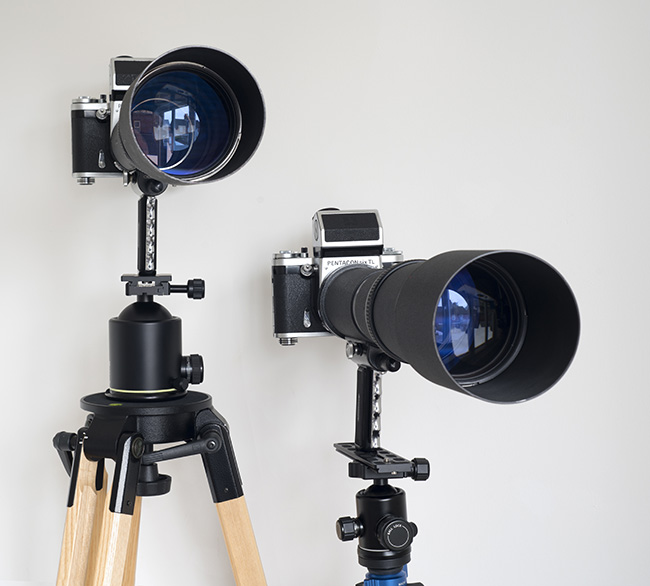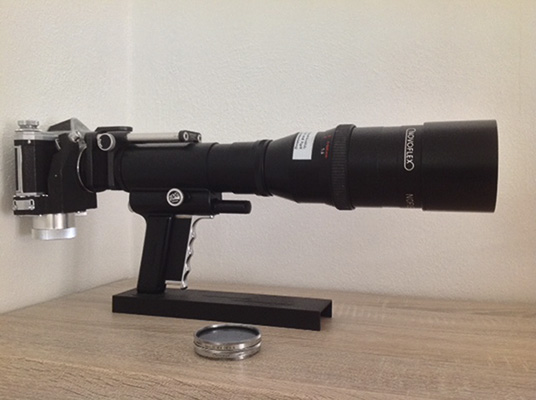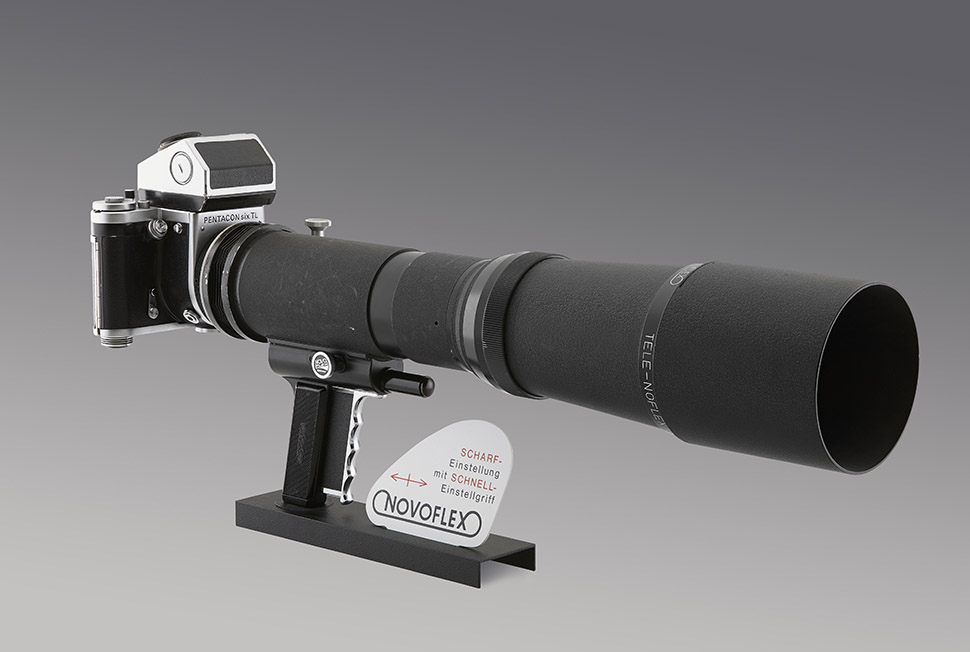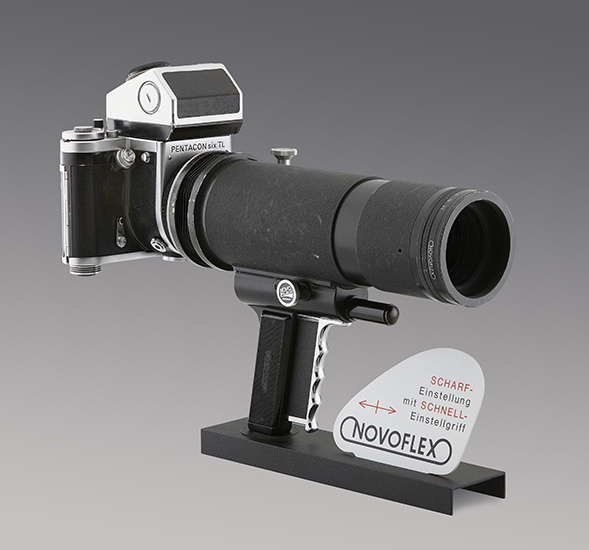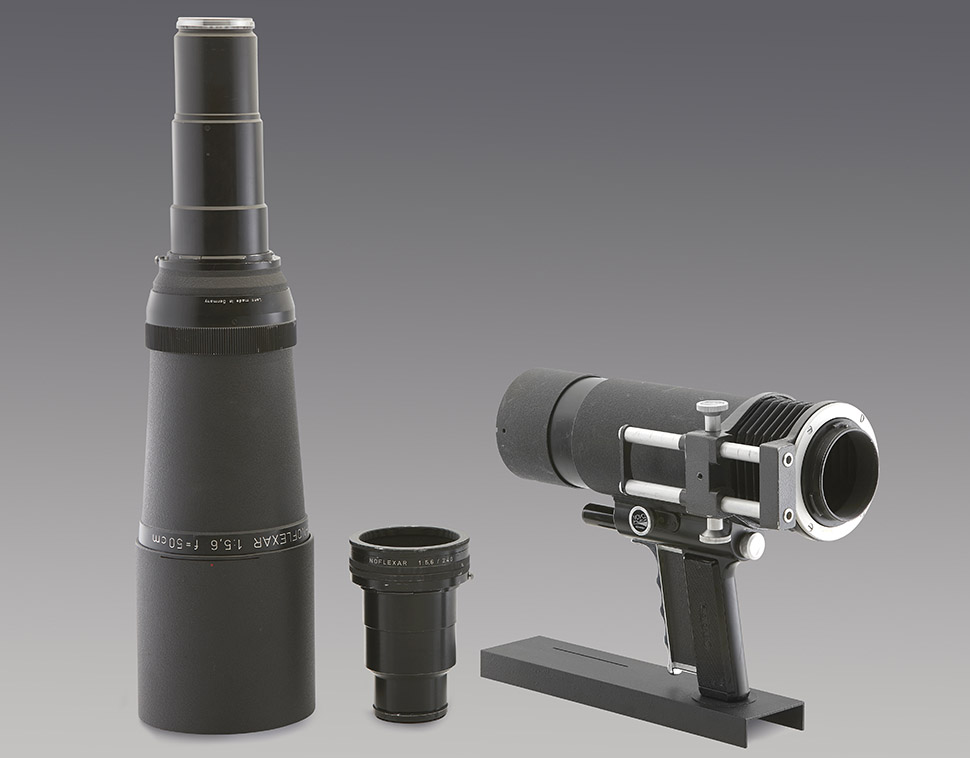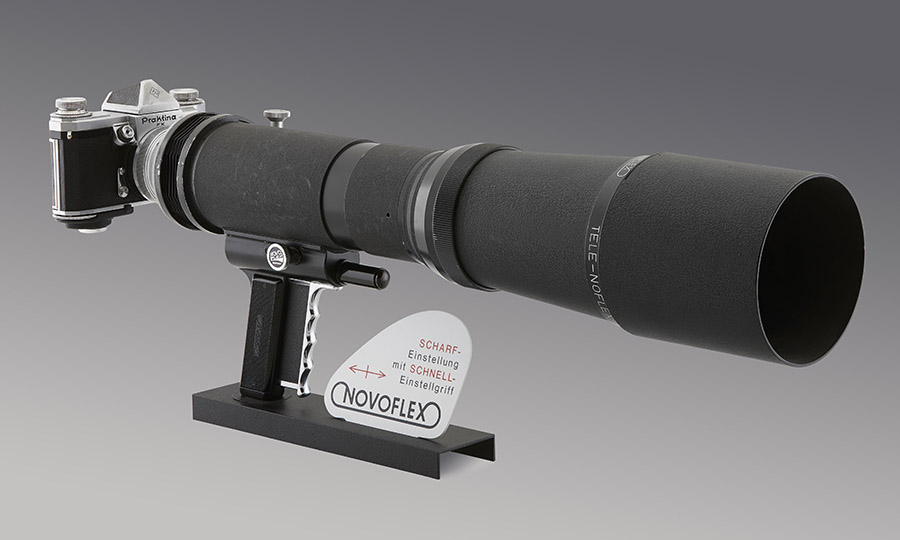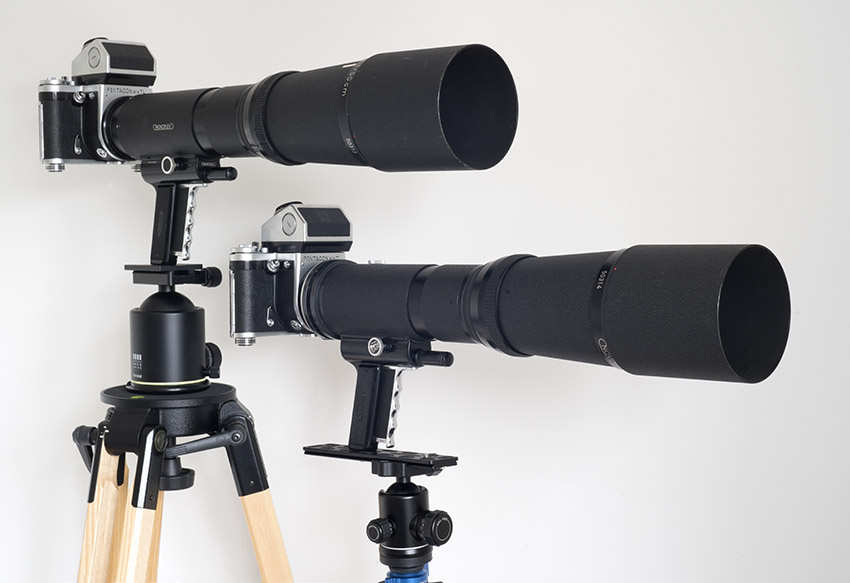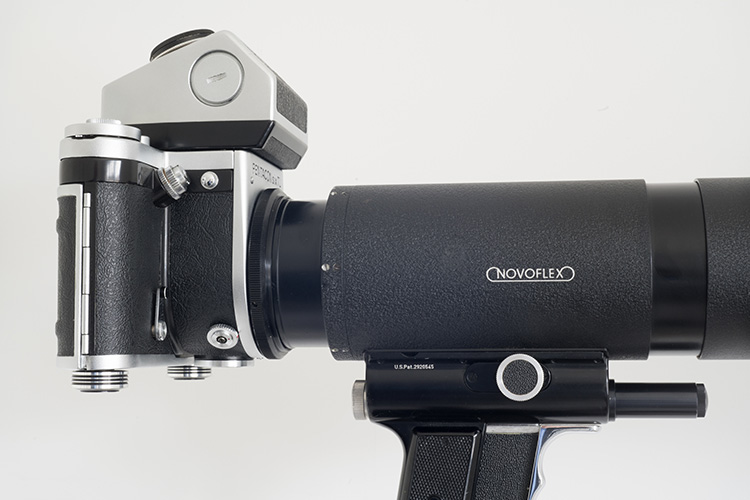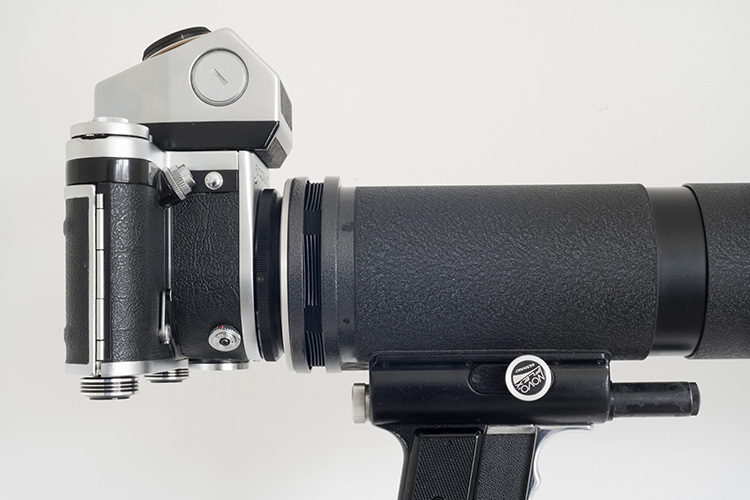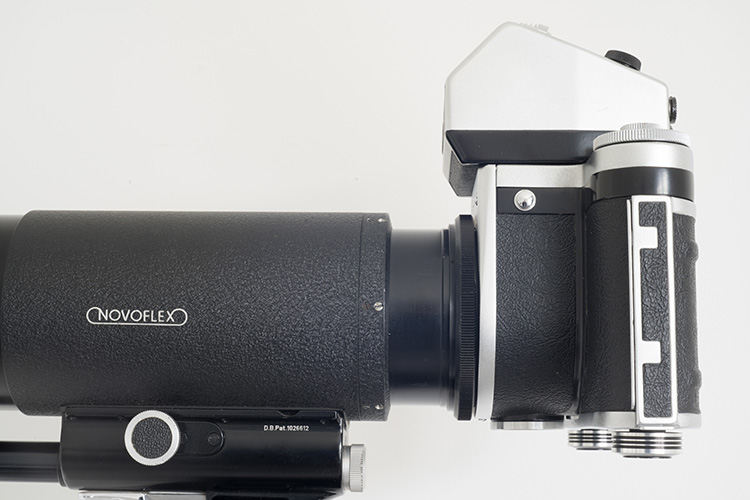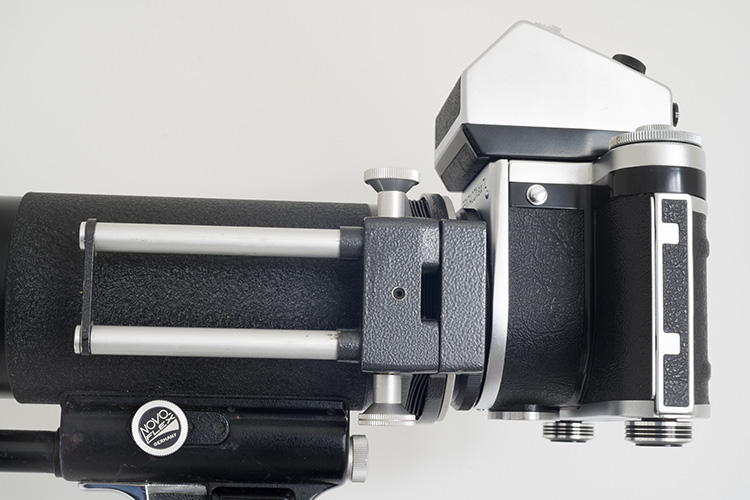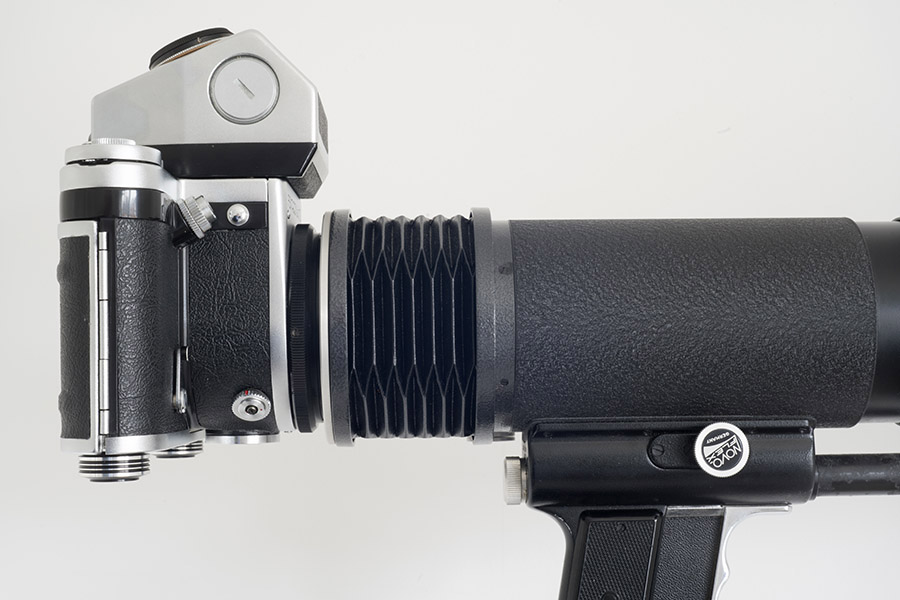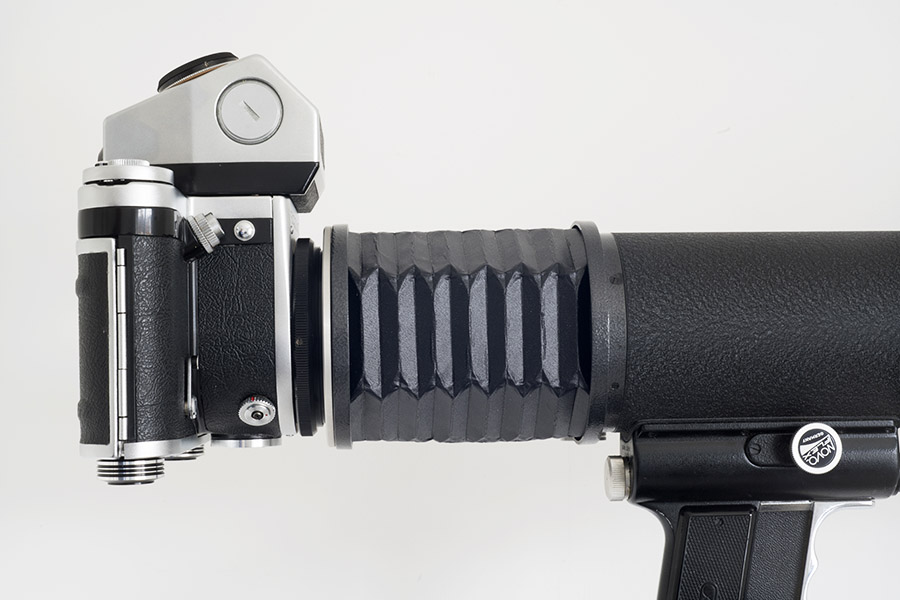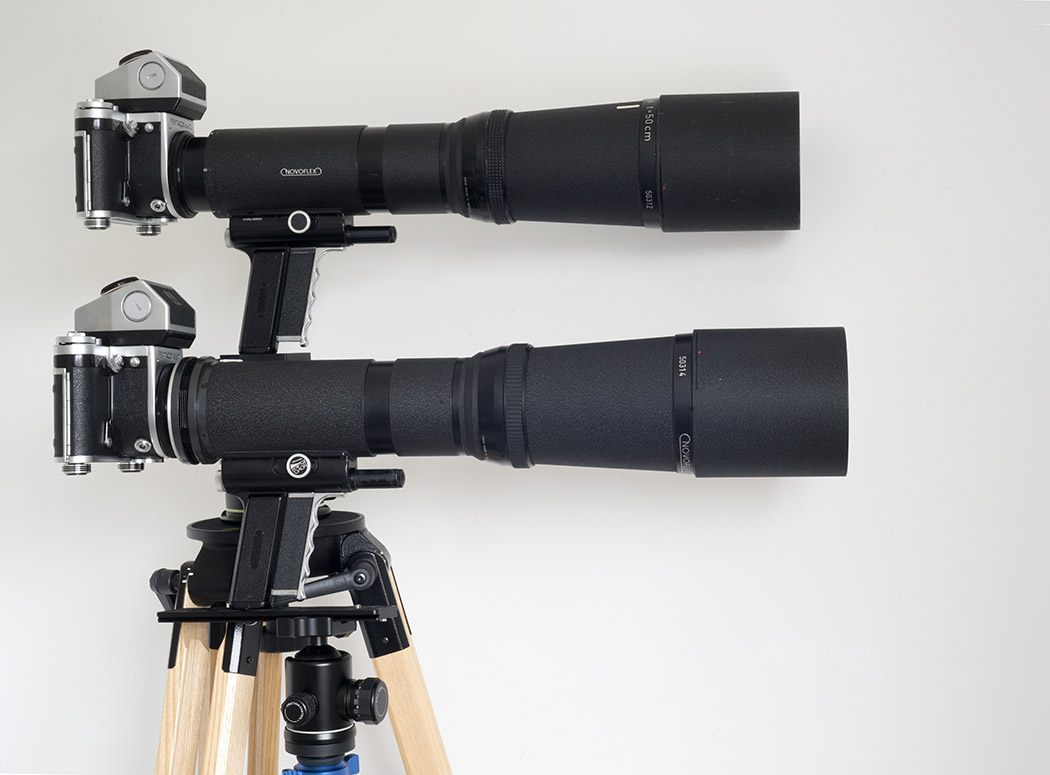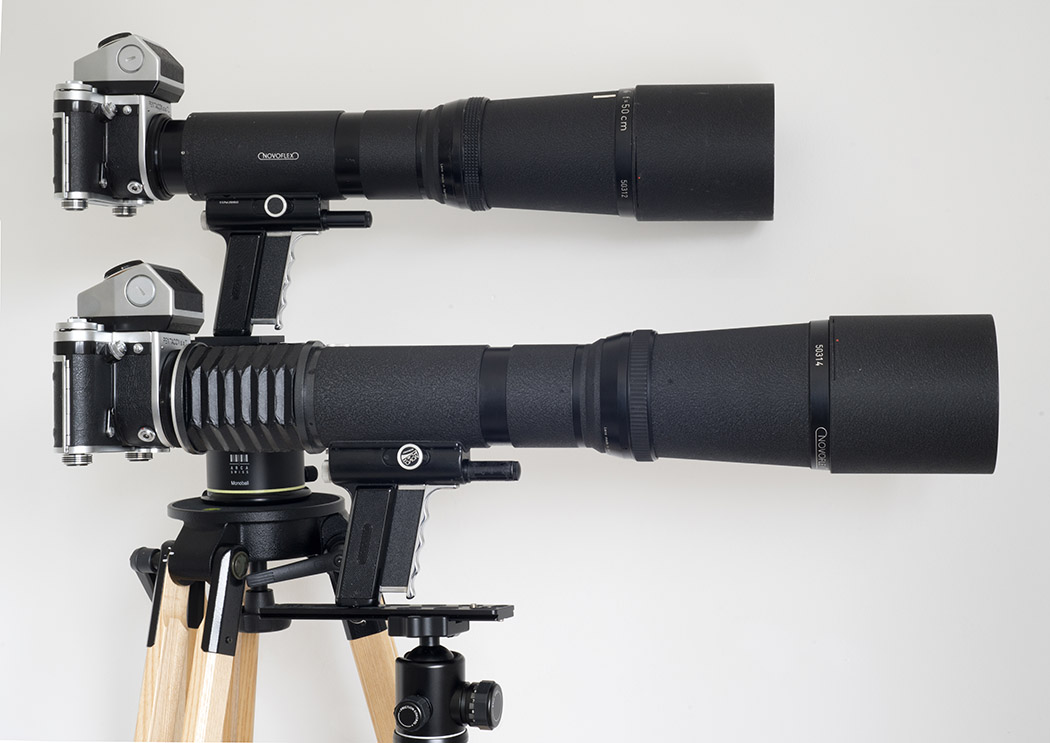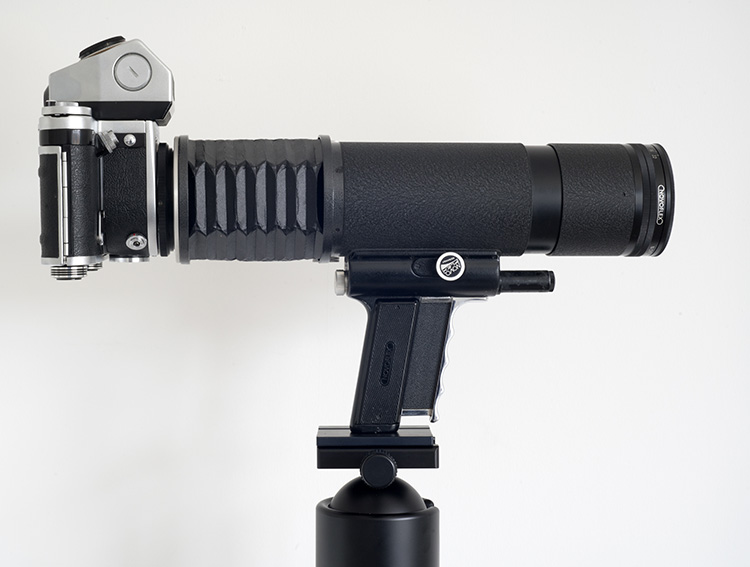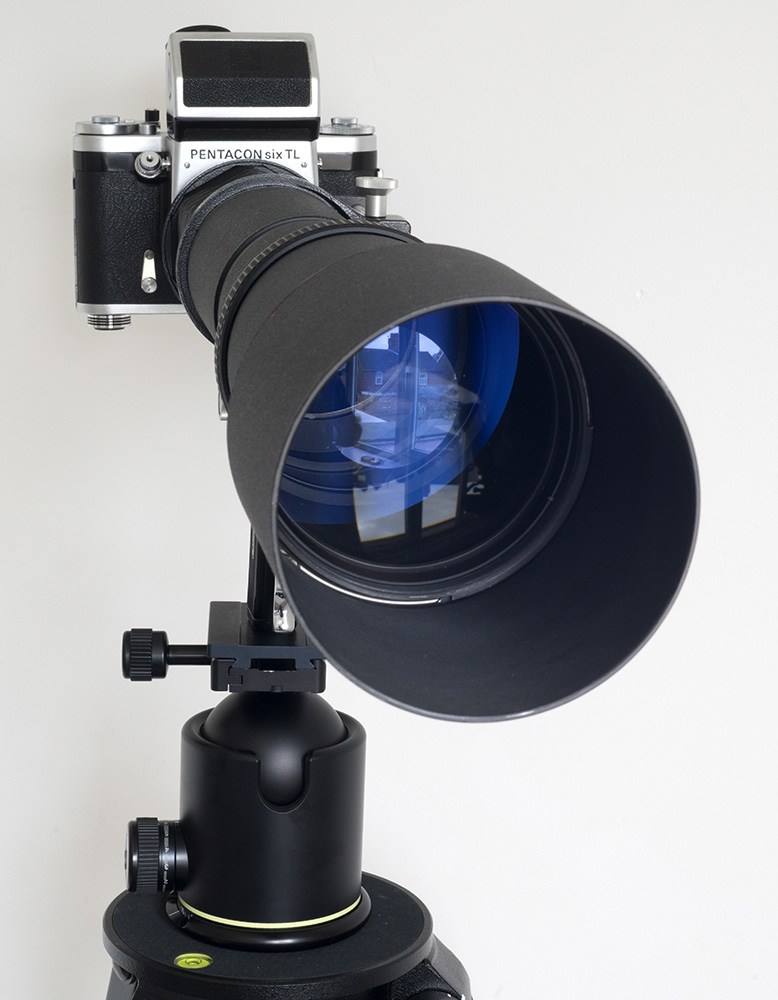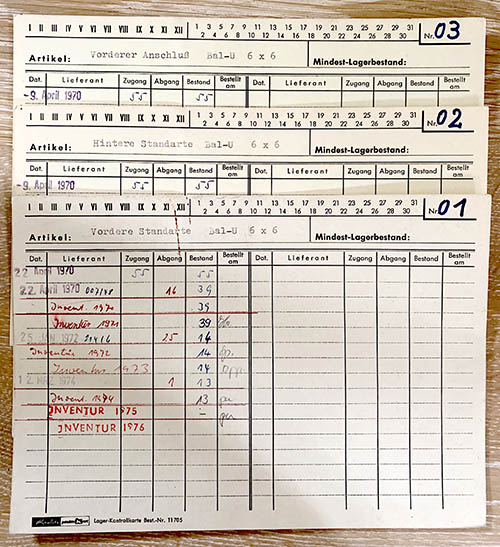Position of the TISPIGRIFF-U bellows
focussing rails: on the top of the grip or on the
side?
From the pictures of Novoflex
bellows for Follow Focus lenses on 35mm cameras, above,
we see that the bellows were mounted upside down on the
top of the fast-focus grip, which is no doubt the origin
of the designation “BALU”, presumably for “BALGEN
UMGEKEHRT” (“bellows inverted/upside down”), yet in the
Pentacon Six images above, we see the bellows positioned
with the focussing rails on the side of
the pistol grip. Why?
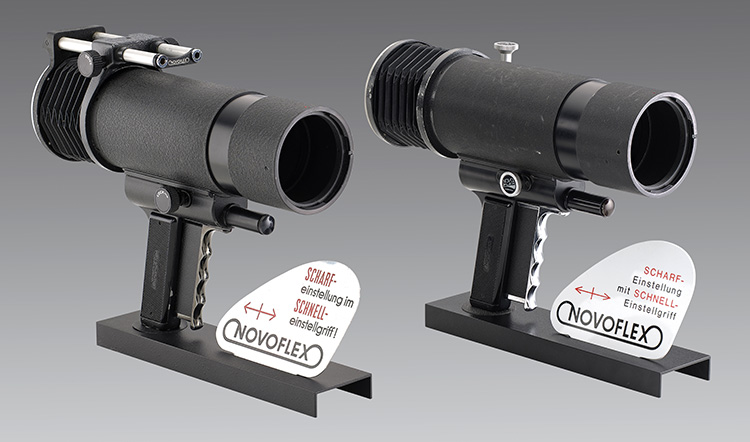
© Fotografenmeister Andreas Marx,
2022 [TISPIGRIFF-U_001as.jpg]
|
|
As this image by
Andreas Marx shows, it was clearly the initial
assumption by Novoflex that for medium format
cameras the bellows focussing rails would run
along the top of the pistol grip, as with the 35mm
cameras. Here we see two TISPIGRIFF-U units
for the Praktisix/Pentacon Six, the one on the
left with the bellows rails on the top and the one
on the right with the bellows rails on the
side. In both pictures the grip is shown
without any lens head in place.
Clicking on the image opens a larger copy of
it.
|
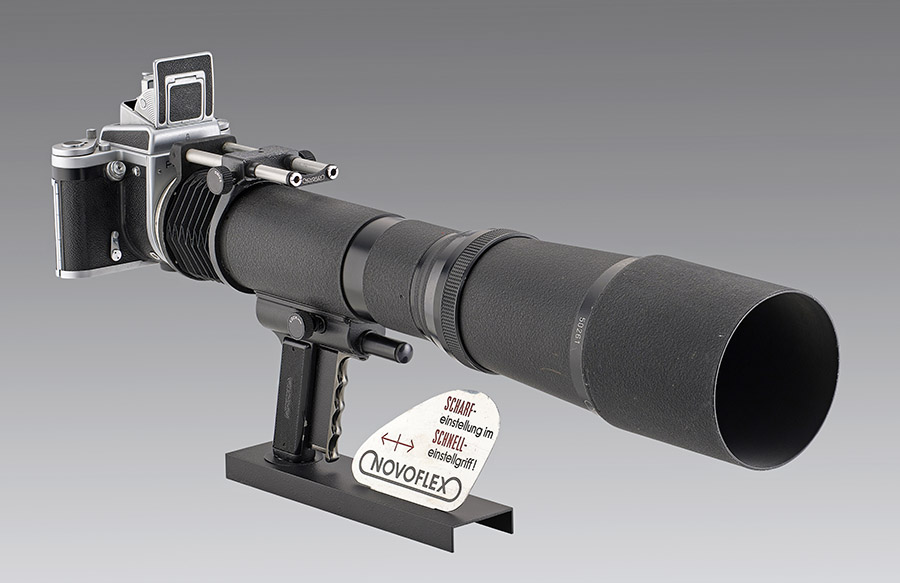
© Fotografenmeister Andreas Marx,
2022 [TISPIGRIFF-U_002s.jpg]
|
|
Here we see what is
probably the original version of the TISPIGRIFF-U,
with the 500mm lens head added, mounted on a
Praktisix (note the absence of the spool holder
knobs on the underside of the camera). It
looks just the job!
Clicking on the image opens a larger copy of
it. |
However, this
“default option” is not without problems on the
Praktisix, as Novoflex must have soon
discovered. The TISPIGRIFF-U fits perfectly
on the Praktisix with the bellows on the top of
the grip provided that the waist-level
finder is used, as in the above
image. However, using a waist-level finder
with such a long lens is really not recommended,
as the subject is shown on the focussing screen
upright but laterally-reversed left to
right. In practical terms, if you are
focussing on a bird and it moves to the left
on your focussing screen, you need to move the
camera to the right! This is
certainly counter-intuitive and would inevitably
result in many images being lost or at least
poorly framed.
However, the designers of the
Praktisix had realised this, and from very early
on a pentaprism was available for the
camera. This solved the lateral reversal
problem completely, but introduced a new problem
for Novoflex.
Here we can see an early version of
the prism for the Praktisix (although not the
first version, which had the “KW” logo in the
front leatherette, whereas this has the Erneman
tower logo used by Pentacon). The
problem? The front of the prism is not
vertical (nor can it be!); it tilts slightly forward,
thus projecting beyond the front of the
camera. This will foul the back of the rear
standard of the bellows on the TISPIGRIFF-U,
making it impossible to mount the unmodified grip
onto the camera. |
|
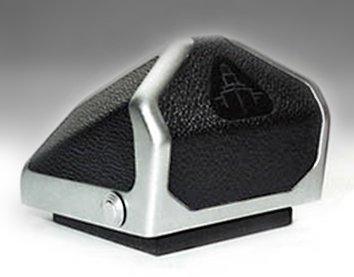
[C311_10c.jpg]
|
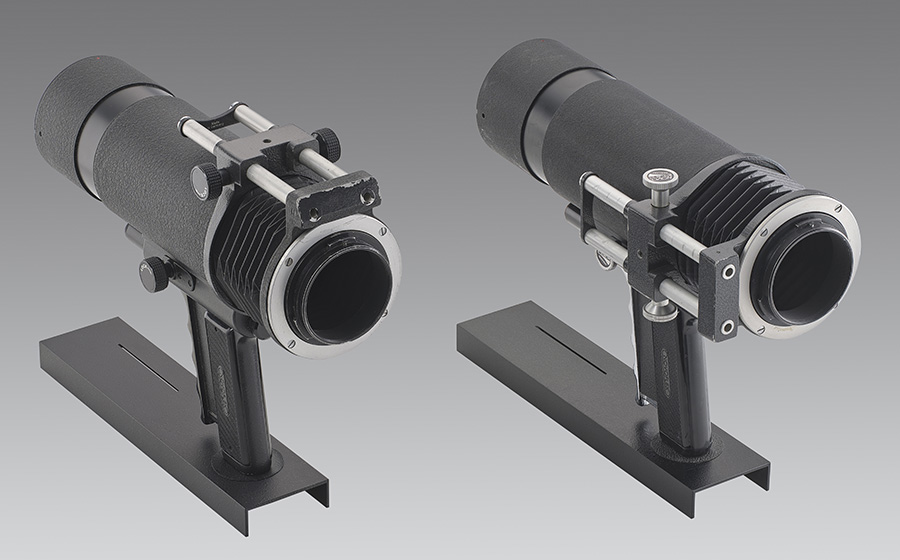
© Fotografenmeister Andreas Marx,
2022 [TISPIGRIFF-U_004s.jpg]
|
|
Here we see
Novoflex’s solution to the problem: they have
filed off at an angle the back of the base of the
rear standard of the bellows (the top of the rear
standard, in this upside-down orientation), just
enough to give clearance for the Praktisix
pentaprism.
This image by Andreas Marx shows the back
of the early version of the TISPIGRIFF-U, with the
bellows rails above the grip, and, to its right,
the later version, with the bellows rails on the
side of the grip.
Clicking on the image opens a
larger copy of it.
Why did the change
to putting the bellows rails on the side of the
grip become necessary?
|
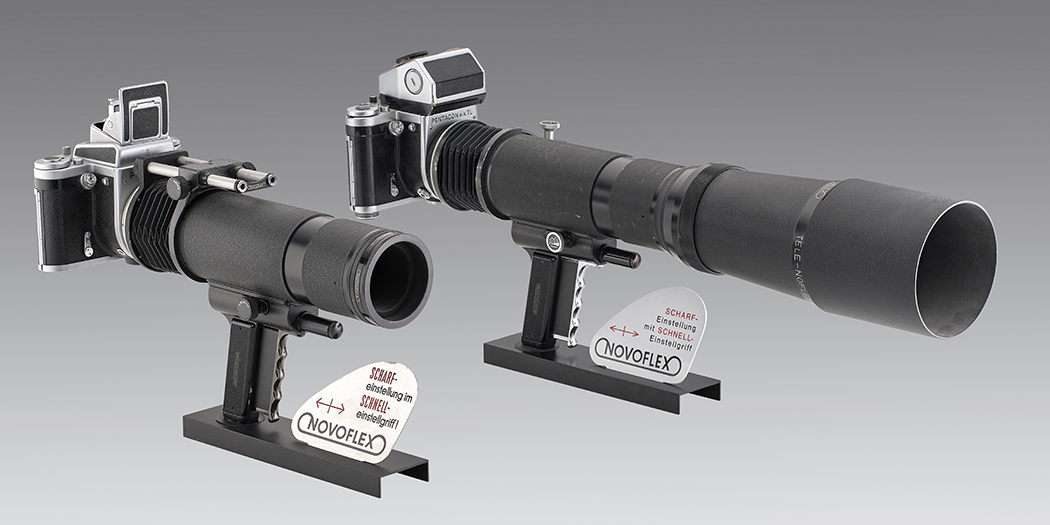
© Fotografenmeister Andreas Marx,
2022 [TISPIGRIFF-U_003s.jpg]
|
|
This image gives us
the answer. In this further image from
Andreas Marx we see on the left an early version
of the TISPIGRIFF-U on a Praktisix, with the 240mm
Noflexar lens in the grip and a waist-level finder
on the camera.
To our right of it we see a newer
version of the TISPIGRIFF-U on a Pentacon Six,
with the 500mm Tele-Noflexar in the grip and a
metering pentaprism on the camera.
This prism was introduced by
Pentacon in 1968, at which time the camera was
renamed from “Pentacon Six” to “Pentacon Six TL”.
At the time, this was a major advance for a Medium
Format camera, introduced ahead of Hasselblad and
most other brands. It would henceforth be
unthinkable for Novoflex to offer its enhanced
grip with the bellows that give much closer
minimum focus, if it could not be used on a
Pentacon Six (or a Praktisix) with a metering
pentaprism in place on the camera. Further
filing off the base (in this configuration, the
“top”) of the rear standard of the bellows was not
an option: strength would be lost and clearance
would probably still not be achieved. The
only solution would be to rotate the bellows
through 90 degrees, and have the bellows rails on
the side of the grip.
This worked perfectly, although
take-up of such a specialised item continued to be
low (see lower down on this page).
Clicking on the
image opens a larger copy of it.
|
|
